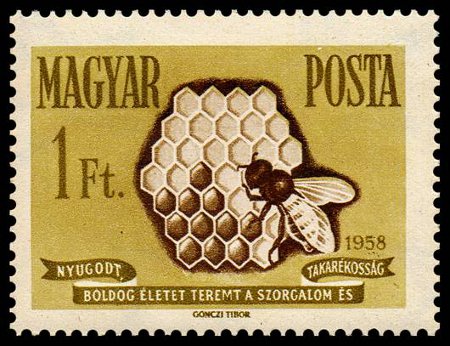
Writing on “The Sagacity of the Bees” in fourth century, Pappus of Alexandria argued that bees had contrived the hexagonal shape of their honeycomb cells “with a certain geometrical forethought.” Irregularly shaped cells “would be displeasing to the bees,” he wrote, and only triangles, squares, or hexagons could fill the space regularly. “The bees in their wisdom chose for their work that which has the most angles, perceiving that it would hold more honey than either of the two others.”
In 1964, in a charming address titled “What the Bees Know and What They Do Not Know,” Hungarian mathematician László Tóth told the American Mathematical Society that he had found a slight improvement on the classic honeycomb design: Instead of closing the bottom of each cell with three rhombi, as bees do, it’s more efficient to use two hexagons and two rhombi.
But, he added immediately, “We must admit that all this has no practical consequence. By building such cells the bees would save per cell less than 0.35% of the area of an opening (and a much smaller percentage of the surface-area of a cell). On the other hand, the walls of the bee-cells have a non-negligible width which is, in addition, far from being uniform and even the openings of the bee-cells are far from being exactly regular. Under such conditions the above ‘saving’ is quite illusory. Besides, the building style of the bees is definitely simpler than that described above. So we would fail in shaking someone’s conviction that the bees have a deep geometrical intuition.”
(László Fejes Tóth, “What the Bees Know and What They Do Not Know,” Bulletin of the American Mathematical Society, 1964, 468-81.)
UPDATE: Wait — maybe they’re not as smart as we thought. (Thanks, Vic.)
